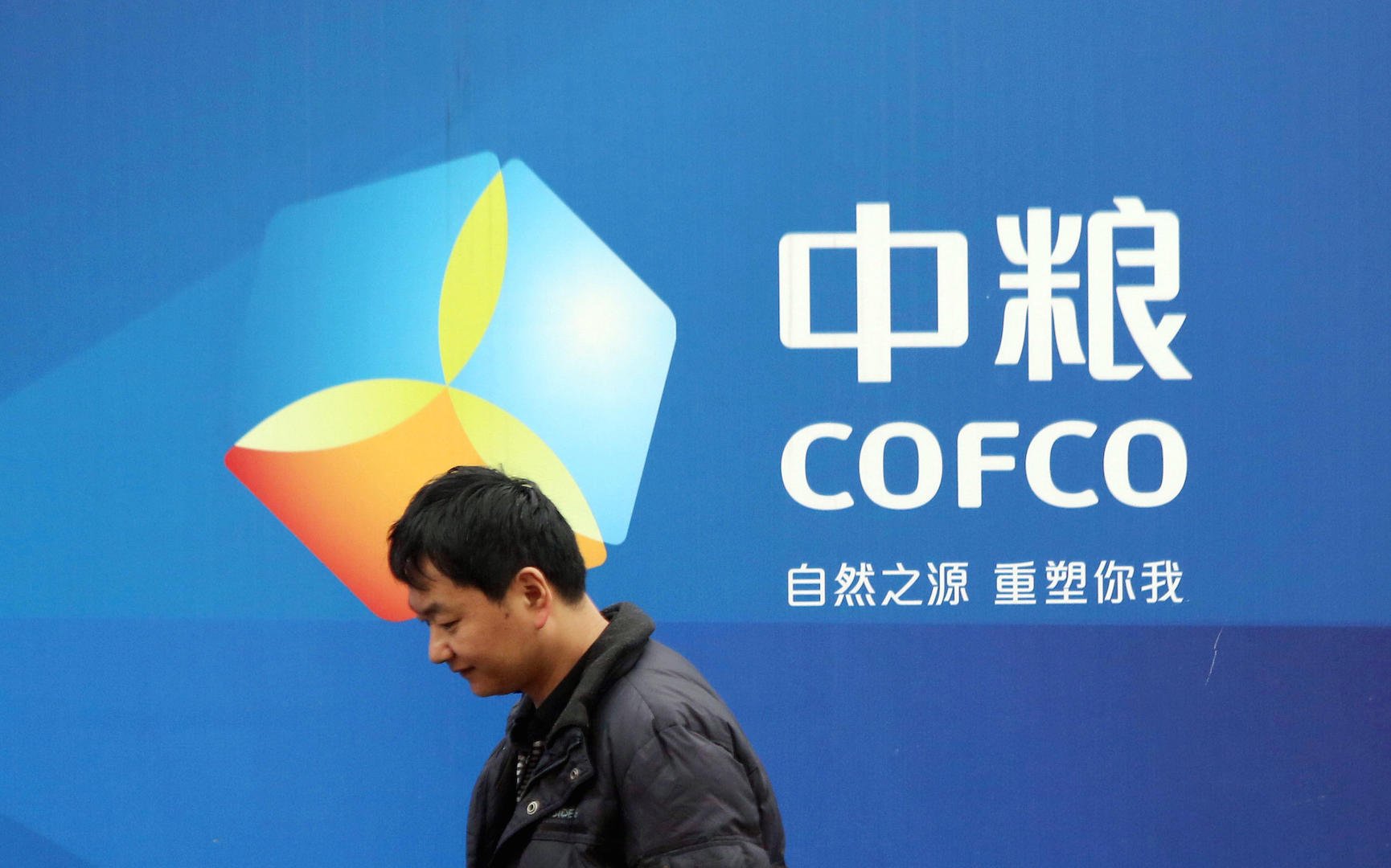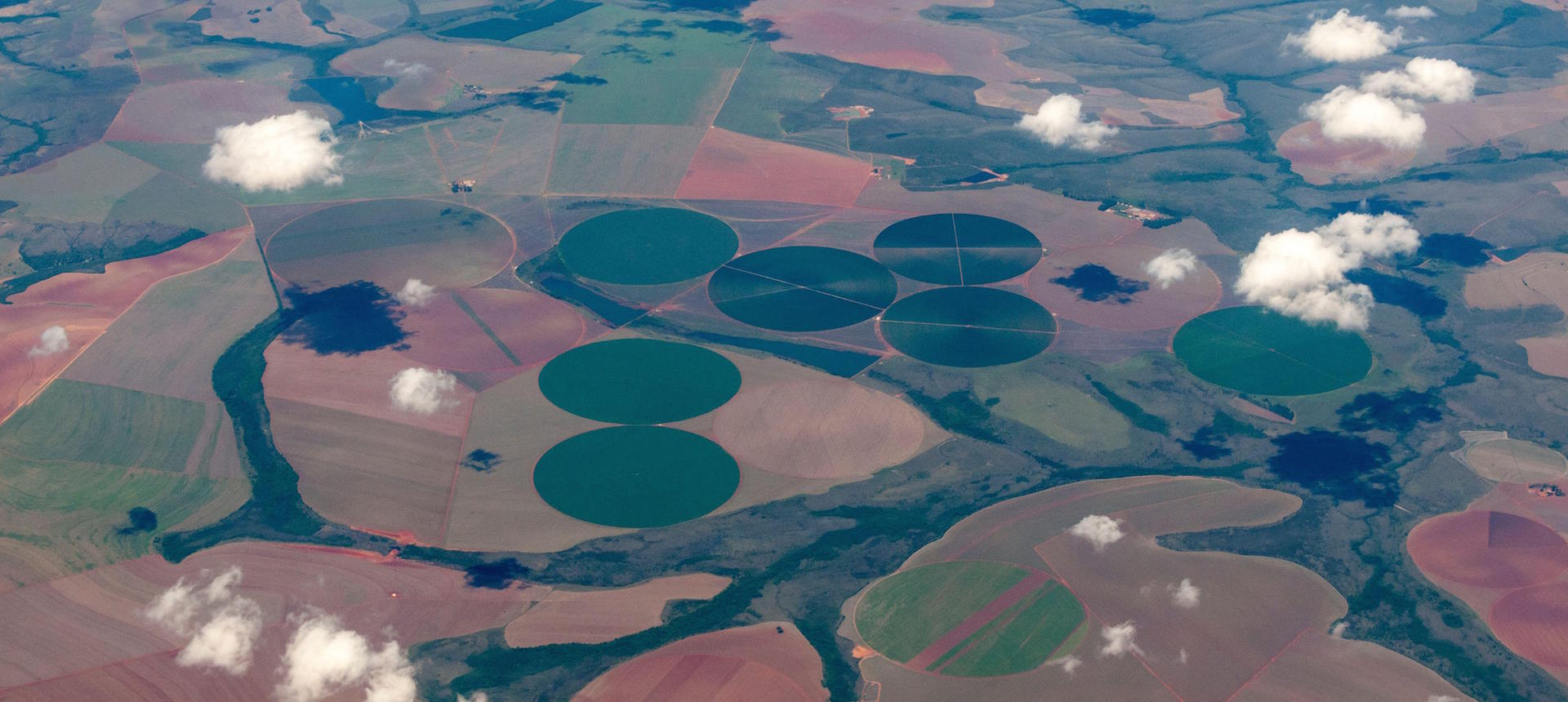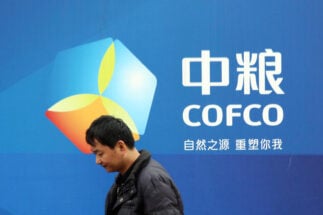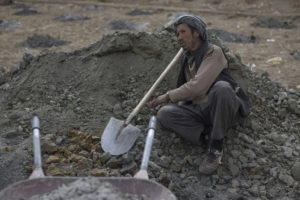Over the last 25 years, China’s soy imports have grown 25% a year on average, to reach almost 100 million tonnes last year. Globally, 362 million tonnes of soy were grown last year, up 46% on 1994. Top producer Brazil now grows soy on 38.3 million hectares of land – up an annual average of 13% since 2000.
While this was happening, and in large part because of it, areas of tropical vegetation in South America shrunk rapidly.
These facts lead one to ask: Is the global soy industry sustainable? Or will it destroy all tropical ecosystems? How can we ensure its production and trade is sustainable?
Between 2006 and 2017, I was vice president of the China Soy Industry Association, in charge of its day-to-day operations. I participated in national policy consultations and facilitated cooperation across soy growers, processors and researchers. I also helped develop the China-South America Sustainable Soybean Trade Platform, a joint initiative of WWF, the Paulson Institute and Solidaridad, and also the China Sustainable Soy Guidelines, the first such document in China.
I’d like to share my take on these questions.
Profitable animal feed is driving soy expansion
Since the Second World War, the human population has grown from 2.5 billion to 7.7 billion. Over the same period, arable land worldwide increased from 1.2 billion to 1.72 billion hectares. The most significant change in agriculture has been the sharp expansion in land used for soy cultivation.
76.8million
tonnes of soy were used for animal fodder in China in 2020
The rapidly growing livestock industry needed sources of protein for fodder. Originally that came primarily from fishmeal. Now fisheries are exhausted, soy is used instead. Between 2008 and 2020 the amount of soybean meal used in animal fodder worldwide increased from 151 million to 254 million tonnes. In China, the rise was from 31.67 million to 76.83 million tonnes. The livestock industry consumes soy protein and produces meat, eggs and milk.
Soy and corn are both key raw materials for fodder production. Corn, a source of starch, can be replaced with other staple crops. But no other crop offers an alternative to soy as a source of protein, and the livestock industry’s demand for it is inelastic. Soy has therefore become the world’s most wanted, and possibly most controversial commodity crop.
Both its supply and demand have increased, and the market has become global: if one country plants less soy, another responds by planting more; lower imports in one country mean another will buy in more. We cannot look only at the major players like Brazil, China and the US.
Most tropical vegetation loss has been occurring in South America. This is not like in the past when farmers might clear land to provide a living for their families. Nor is it entirely the fault of Brazil or Argentina. I have visited sites of deforestation in South America and seen primary forest burned to ash and ancient trees pulled from the ground by heavy machinery. The loss of forest and animal habitats is devastating. That modernised process of deforestation is driven by profitability, and this is not unique to South America – the same has been seen in other regions like Southeast Asia.
The harsh facts of extinctions, climate warming and pollution have been warning us that the law of the jungle does not work for human society
After clear-cutting, the vast tropical land is ideal for large-scale agricultural operations. Combined with mechanisation and the liberal use of weedkillers, pesticides and fertilisers, this makes South America the cheapest region in the world to grow soy, a major advantage on the global markets.
Meanwhile in Russia and elsewhere in Eastern Europe, we see large amounts of farmland lying unused. The stark contrast represents a failure of global agriculture.
As everyone knows, there is a duality to capital. On one hand, it flows and as it flows it mobilises resources and creates value. But it is also exploitative, taking big profits at the expense of environmental health.
For almost a century the harsh facts of extinctions, climate warming and pollution have been warning us that the law of the jungle does not work for human society. We must rein in capital and the harms it does and use new ideas and improved laws to protect the environment and ensure a sustainable economy.
With rising concern about nutrition, soy is no longer the ugly duckling
Soy originated in China, and 8,000 years ago humans were picking wild soybeans to eat. Farming of soy began 5,000 years ago and 2,600 years ago the Chinese started making tofu from soy. The Chinese people and the humble soybean have a long shared history.
Yet for some time policymakers regarded it as a low-yield crop, an ugly duckling not worthy of inclusion in food security plans. China has therefore become increasingly reliant on imports.
Currently, soy yields in China are less than 200 kilograms per mu (666 square metres), far less than for corn, rice or wheat. But look at it another way: Chinese-grown soy is 40% protein, a proportion higher than that of pork, beef, or egg – and several times as much as the equivalent weight of other grain crops. Soy is also 20% fat and is rich in folic acid and vitamin E – again, other crops cannot compete.
As China becomes more affluent, there is less focus on quantity of food, and more on nutrition. Now we can see that soy, rather than being the ugly duckling, is actually a swan. More use of soy as food for humans, rather than livestock, would help provide nutrition and reduce the environmental pressures caused by soy cultivation for fodder.
Soy sustainability needs global efforts – and China can lead
Protecting the rainforests and biodiversity, and combatting climate change, are crucial for humanity’s future. We need to start working together today. No individuals, no companies, no countries can be left behind.
I believe six actions must be taken if we are to see sustainability of soy worldwide, some of which require changing policies and consumption habits in China.
- Developed nations and multinational grain traders should support legislation to stop clearing of tropical vegetation in South America, and refuse soy associated with illegal clearing.
Developed countries have accumulated capital and technology that give them advantages in global markets. Countries in South America and elsewhere are less developed and need the economic boost from expanding farmland. But they also have a responsibility to protect tropical ecosystems. Other countries should understand the situation South American countries are in and help them to develop other sectors of their economy, expanding non-agricultural job opportunities and reducing reliance on agricultural expansion via deforestation.

International traders should use their influence to support legislation and existing initiatives protecting South American ecosystems and refuse to buy soy associated with illegal clearing. Two-thirds of the global trade in soy is bound for China. Chinese firms have worked with international organisations to produce the China Sustainable Soy Guidelines, setting forward principles for sustainable development designed to protect the environment, increase soil fertility, prevent chemical and biological pollution, and provide safe and healthy crops, along with quantitative indices. Chinese firms including the China Oil and Foodstuffs Corporation (COFCO), the China Grain Reserves Corporation and the Jiusan Group have made clear in their procurement policies they will not buy soy associated with illegal deforestation. These represent actions China has taken to encourage sustainable development of the soy sector.
- Work with countries in Eastern Europe and Africa to use abandoned farmland to expand soy cultivation
China’s Belt and Road Initiative provides a new opportunity for agricultural cooperation with countries in Europe and Africa. Its agricultural universities and companies are currently working in Russia, the Ukraine, Belarus and Uzbekistan to make use of both abandoned farmland and wasteland with agricultural potential. Improving crop varieties and technology will also allow soy to be planted more widely. Currently, Russia produces a mere 4 million tonnes of soy, and exports only 800,000 tonnes to China, but potential exports could reach 20 million tonnes. Developing soy cultivation in Russia alone would stabilise China’s soy supply and reduce pressure on South American forests.
- Adjust food security policies to subsidise crop rotation, rather than harvests
There is no need to choose between soy and corn in food security policies, as constantly changing rules can leave farmers unsure about what to plant. China’s home-grown soy is used mainly for human consumption, while its corn is used for animal fodder. Experience has shown that rotating corn and soy crops in the north-east of China results in consistently high yields. But subsidies for just corn or just soy result in repeated planting of that crop, and so crop rotation and its advantages are lost. Instead of subsidising corn or soy, I suggest the state subsidises the rotation of the two. Farmers will have certainty about what to plant, rather than worrying over which subsidy to choose, and we will gain higher yields and more stable production of both crops.
- Strict enforcement of the law regulating soy trading, to ensure healthy development
Soy grown for human consumption and for animal fodder have diverged, becoming two separate products with different markets, prices and policies.
About 80% of global soy production is used in animal fodder. Virtually all of China’s soy imports from the US, Brazil and Argentina are used in this way, and Chinese law requires that these imports go directly to a processing plant and are not resold. The processed soybean meal is used almost exclusively as raw material for animal fodders.
Meanwhile, China is the world’s largest grower of soy for human consumption, with the non-GM, high-protein variety grown there used in food production. European food processors import large quantities of Chinese-grown soy protein, which has a 50% share of the global market for soy protein for food use.
On the international markets, soy for human consumption is usually 800 yuan per tonne (US$123) more expensive than soy for fodder. This means some illegal traders break China’s rules on GM foods and pass the cheaper product off for human consumption. That undercuts legitimate soy growers and is a food safety risk. The customs authorities, market regulation authorities and law enforcement bodies should proactively tackle such behaviour to maintain an orderly market and protect China’s domestic soy growers.
- Build on China’s soy consumption habits to provide an alternative to animal proteins
Soy is a jewel in the crown of Chinese cuisine. The Chinese have used soy to produce an impressive variety of products – tofu, soymilk, tofu skin, fermented soybeans and soy sauce. China’s culture of soy consumption is spreading around the world and is at the heart of a trend towards plant proteins.
The Chinese government is trying to balance out consumption of plant and animal proteins. Soy protein contains eight of the nine essential amino acids we require and can be consumed directly. Experts say that when soybean meal is used for animal fodder, we obtain 1 kilogram of animal protein for every 2-4 kilograms of soy protein – a waste of resources. A more balanced structure making better use of plant proteins would be healthier. And every extra tonne of soy used for human consumption could reduce its use in animal fodder by 2-4 tonnes.
I suggest the state focuses as much on developing the use of soy in food as it does on growth of the livestock industry. I suggest it encourages scientists and companies to work together to improve processing techniques, boost output and quality, and promote the use of soy nutrients as plant-based meats, milk alternatives, peptides, amino acids and soy lecithin. Meanwhile, we can improve the make-up of our livestock industry by increasing the proportion of grass-fed animals, improving animal fodder and boosting the utilisation ratio of protein.
- Reduce food waste from restaurants and the kitchen table
According to a recent report from the National People’s Congress Standing Committee, the catering sector in Chinese cities wastes about 34–36 million tonnes of food annually. A university study found households waste 17% of their food, while 20% of food on restaurant tables lands in the bin. Meanwhile, data from the State Council Information Office shows that over 50% of Chinese adults are overweight or obese, with the levels increasing for all age groups and areas in China.
Cutting that waste in half would save China over 60 million tonnes of food a year. That would free up land for soy cultivation, greatly reducing our reliance on soy imports and balancing global supply and demand. The reduced demand for meats and fats, meanwhile, would greatly reduce use of soy for animal fodder. Preventing food waste is a green approach to protecting tropical vegetation.








